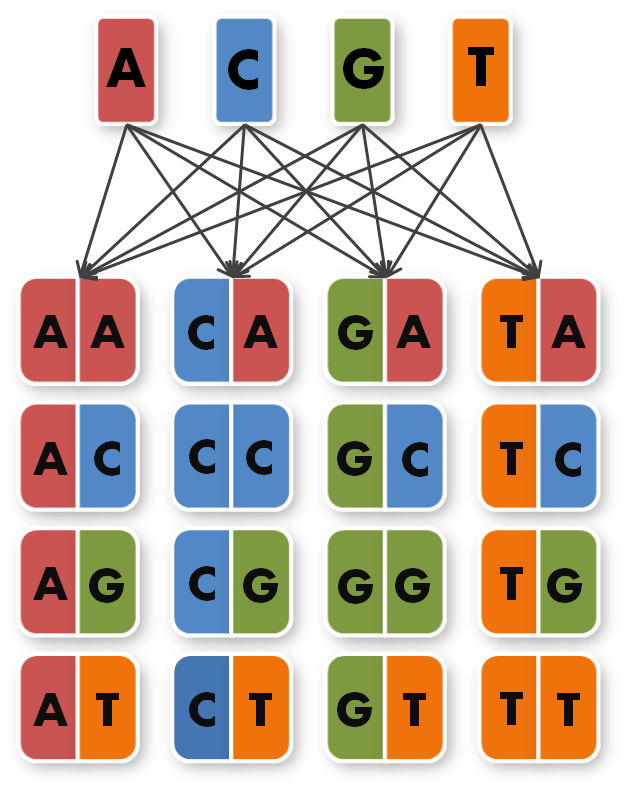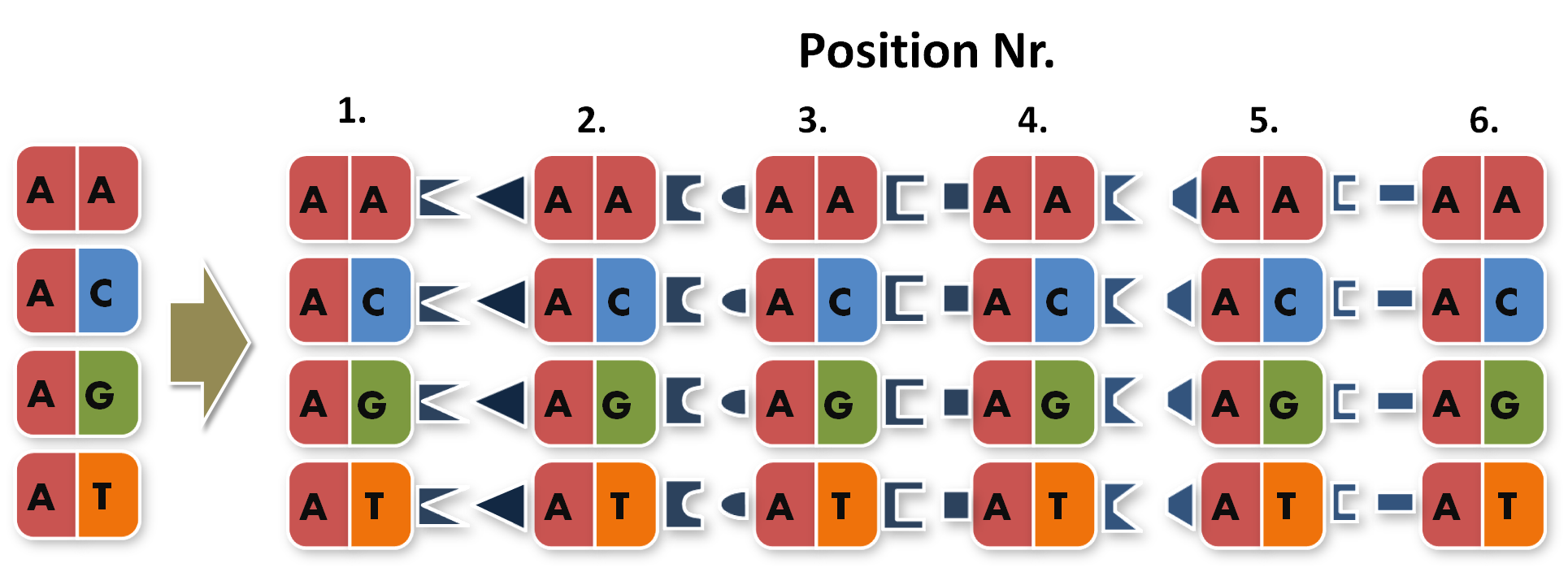Team:Freiburg/Project/Overview
From 2012.igem.org
(→Building a Toolkit) |
(→The 96 direpeats) |
||
| Line 7: | Line 7: | ||
==<span style="color:#2244AA"> The 96 direpeats == | ==<span style="color:#2244AA"> The 96 direpeats == | ||
| - | <div align="justify">In this first part we explain the | + | <div align="justify">In this first part we explain the theoretical background of our project and the path we took creating our TAL toolkit. You will understand why our toolkit looks the way it does and what the theory behind its mechanisms is. If you look for a tutorial on how to use the toolkit we refer you to the "using the toolkit" section in the project part.<br> |
| Line 15: | Line 15: | ||
| - | We took the sequences of the four already known TAL | + | We took the sequences of the four already known TAL repeats A,C,G,T and combined them into 16 new, so called direpeat sequences. These 16 direpeats were ordered as gene synthesis products. <BR>Now the real work began. To start building TAL Proteins we needed to expand our 16 direpeats a second time. Each of the 16 direpeats needed to be integrated into six versions marked with different terminal sequences, one version for every place of our final six direpeat TAL protein. Because we didn't want to buy six times 16 different synthesised direpeats we came up with a plan to produce them by ourselves. We created six primer pairs, each primer with a common part matching all of the direpeats and an unique overhang contacting the direpeat it binds to. |
| Line 23: | Line 23: | ||
| - | Because we | + | Because we did not feel comfortable requiring six different restriction enzymes in the final PCR to produce a twelve direpeat TAL, we used a technic called golden gate cloning. The technic uses the type two restriction enzyme BsmB1 and its ability to cut DNA slightly downstream of the recognition site. This way it was possible for us to create different sticky ends with just one enzyme. Therefore we are able to ligate six different parts in the right order in one PCR step. |
| Line 32: | Line 32: | ||
| - | After finshing these 96 different extension | + | After finshing these 96 different extension PCR's we had to ligate the products into the orignial igem biobrick vector and finally got our full library of 96 unique direpeats |
Revision as of 16:24, 24 September 2012
Building a Toolkit
The 96 direpeats

|
We took the sequences of the four already known TAL repeats A,C,G,T and combined them into 16 new, so called direpeat sequences. These 16 direpeats were ordered as gene synthesis products.
Now the real work began. To start building TAL Proteins we needed to expand our 16 direpeats a second time. Each of the 16 direpeats needed to be integrated into six versions marked with different terminal sequences, one version for every place of our final six direpeat TAL protein. Because we didn't want to buy six times 16 different synthesised direpeats we came up with a plan to produce them by ourselves. We created six primer pairs, each primer with a common part matching all of the direpeats and an unique overhang contacting the direpeat it binds to.

|
Because we did not feel comfortable requiring six different restriction enzymes in the final PCR to produce a twelve direpeat TAL, we used a technic called golden gate cloning. The technic uses the type two restriction enzyme BsmB1 and its ability to cut DNA slightly downstream of the recognition site. This way it was possible for us to create different sticky ends with just one enzyme. Therefore we are able to ligate six different parts in the right order in one PCR step.

|
After finshing these 96 different extension PCR's we had to ligate the products into the orignial igem biobrick vector and finally got our full library of 96 unique direpeats

|
 "
"
